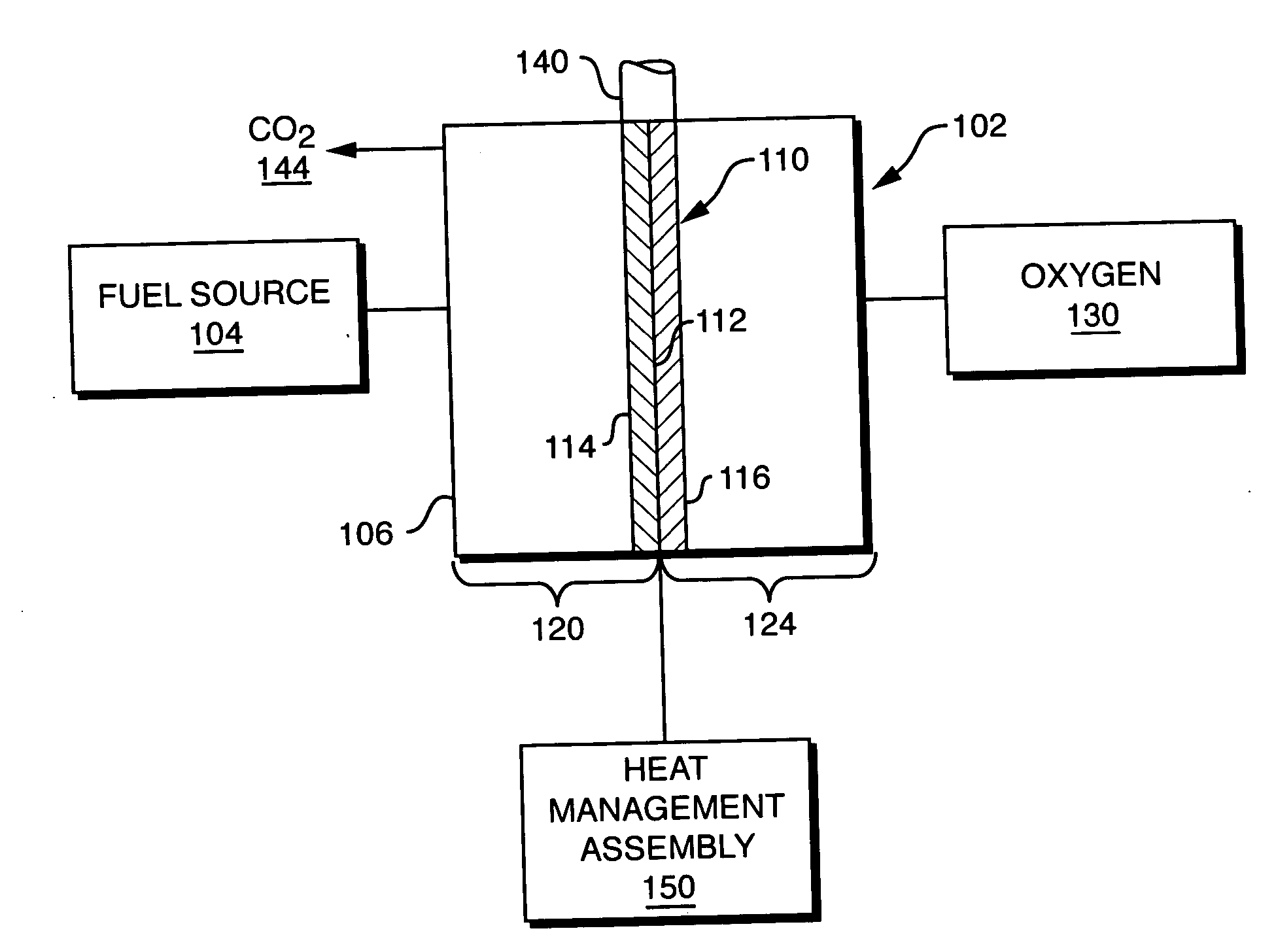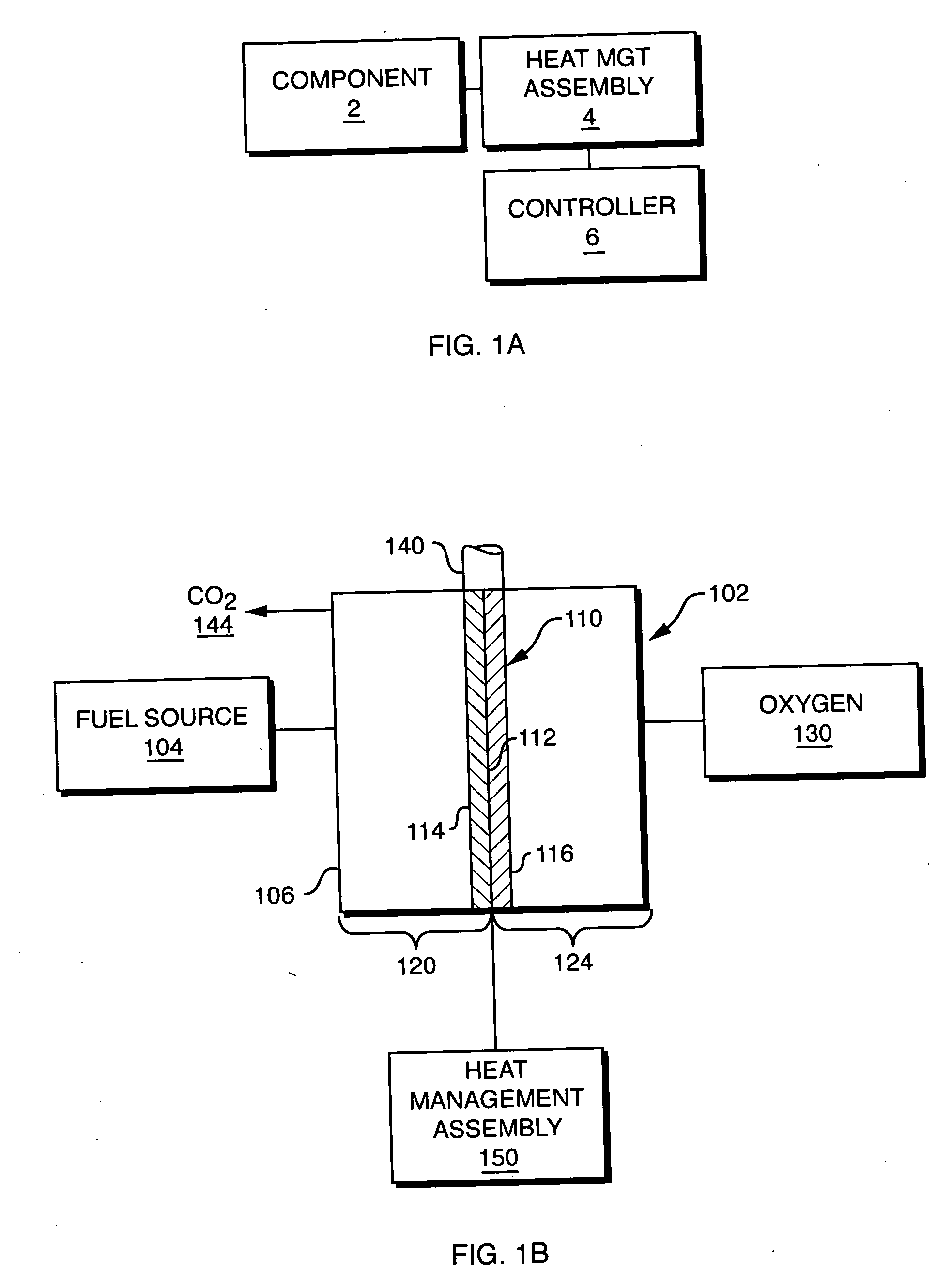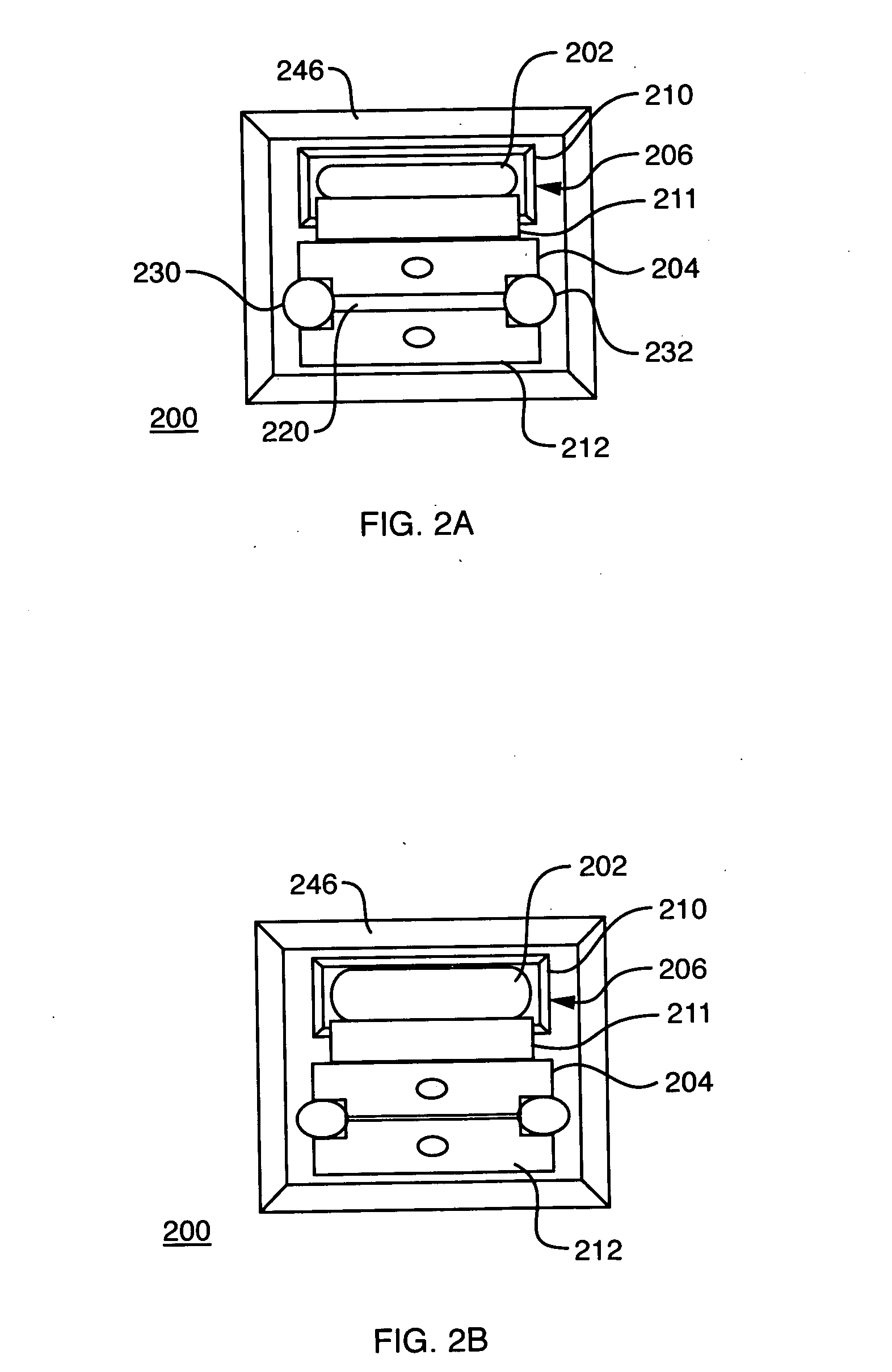Apparatus and method for variable conductance temperature control
a technology of variable conductance and temperature control, applied in the field of thermal management, can solve the problems of significant parasitic power loss, compact dmfc technology platform, and increased weight and volume of the power system, and achieve the effects of reducing the number of dmfc technology platforms, and improving the efficiency of the power system
- Summary
- Abstract
- Description
- Claims
- Application Information
AI Technical Summary
Problems solved by technology
Method used
Image
Examples
example
[0077] A heat switch in accordance with the present invention was tested. The heat switch was tested with the air gap distance being varied between zero and 0.25 mm. The contact area of the hot contact 304 with the cold contact 312 was about 0.5 cm2 per disk. The contact force varied between 0 and 5 lbs. The phase change actuator transition temperature was between about 41 degrees Celsius and 43 degrees Celsius. The interface material was Graffech Hitherm™ 0.10 PSA (16 W / mK). The conditions where tested such that the power levels varied at the lab ambient temperature of 18 to 23 degrees Celsius. The following graphs illustrate the results that were achieved by the device of the present invention.
[0078]FIG. 5A illustrates the graph 500 which is a plot of heat switch thermal resistance in degrees Celsius per watt (C / W) vs. the temperature of the hot contact in degrees Celsius (C). It can be seen that the hot contact governs the change in resistance of the heat switch, and there is li...
case embodiment
Here would be a good place for description of a 4 cell array to heat switch to case embodiment
[0094] In accordance with the method of the present invention, the thermal management can be used for controlling hydration in the fuel cell, i.e. to control a flooding condition or a drying out of the fuel cell. More specifically, there are measurements which can distinguish between these two performance loss scenarios. Flooding indicators include a drop in cell current followed by a drop of measured open circuit voltage and a drop of cell resistance. In contrast, fuel cell dry out indicators include a drop in cell current followed by a rise in cell resistance with little effect on measured open circuit voltage. From this, it can be determined whether to control the temperature of the fuel cell to thereby encourage water accumulation (referred to as flooding) to avoid drying out, or to intentionally dry the fuel cell to decrease an over hydration condition. The steps may be performed in a ...
PUM
| Property | Measurement | Unit |
|---|---|---|
| temperature | aaaaa | aaaaa |
| temperature | aaaaa | aaaaa |
| air gap distance | aaaaa | aaaaa |
Abstract
Description
Claims
Application Information
 Login to View More
Login to View More - R&D
- Intellectual Property
- Life Sciences
- Materials
- Tech Scout
- Unparalleled Data Quality
- Higher Quality Content
- 60% Fewer Hallucinations
Browse by: Latest US Patents, China's latest patents, Technical Efficacy Thesaurus, Application Domain, Technology Topic, Popular Technical Reports.
© 2025 PatSnap. All rights reserved.Legal|Privacy policy|Modern Slavery Act Transparency Statement|Sitemap|About US| Contact US: help@patsnap.com



